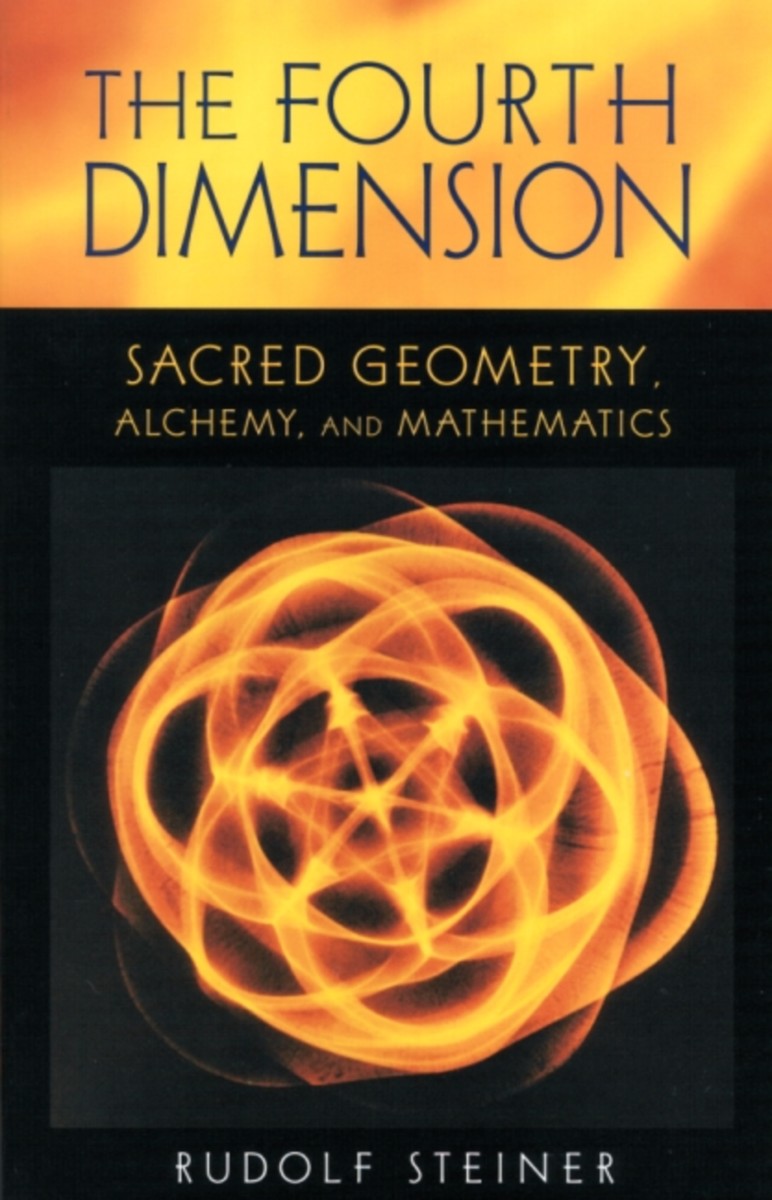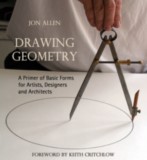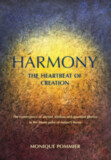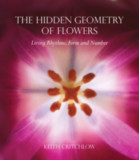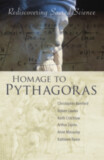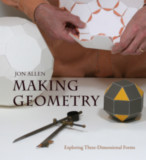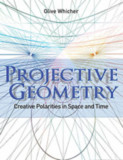The Fourth Dimension
Sacred Geometry, Alchemy & Mathematics (CW 324a)
Introduction by David Booth
Drawings by Renatus Ziegler
Translated by Catherine E. Creeger
- Publisher
SteinerBooks - Published
1st June 2001 - ISBN 9780880104722
- Language English
- Pages 256 pp.
- Size 6" x 9"
6 lectures, Berlin, March 24–June 7, 1905;
2 lectures, Nov. 7, 1905 & Oct. 22, 1908;
Questions & Answers, 1904–1922 (CW 324a)
The point, line, plane and solid objects represent the first three dimensions, but a kind of reversal of space is involved in the ascent to a fourth dimension. Steiner leads us to the brink of this new perspective—as nearly as it can be done with words, diagrams, analogies, and examples of many kinds. In doing so, he continues his lifelong project of demonstrating that our objective, everyday thinking is the lowest rung of a ladder that reaches up to literally infinite heights.
The talks in this series and the selections from the question-and-answer sessions on many mathematical topics over the years are translated into English for the first time in The Fourth Dimension. They bring us to tantalizing new horizons of awareness where Steiner hoped to lead his listeners:
Topics include:
∞ The relationship between geometric studies and the development of direct spiritual perception
∞ How to construct a fourth-dimensional hypercube
∞ The six dimensions of the self-aware human being
∞ Problems with the theory of relativity
∞ The Trinity and angelic hierarchies and their relationship to physical space
∞ The dimensional aspect of the spiritual being encountered by Moses on Mt. Sinai
Drawings in the text: The sketches of figures that Rudolf Steiner drew on the board during the lectures are available only in the form in which they were preserved by the note takers. Reconstructions of the drawings for this volume were done by Renatus Ziegler.
This volume is a translation from German of Die vierte Dimension Mathematik und Wirklichkeit (GA 324a).
CONTENTS & SYNOPSES:
Introduction by David Booth
PART ONE: LECTURES ON THE FOURTH DIMENSION
1. Berlin, March 25, 1905: Mathematical thinking and reality. The dimensions of space. Movement as a means of passing from lower to higher dimensions. Mirror-image symmetry. Analogies for the relationship between the outer world and internal sensation: bending ever larger line segments into circles, seal and sealing wax. The fourth dimension as a conceptual possibility and as reality. Enlivening our visualization of space: Oscar Simony’s models.
2. Berlin, March 31, 1905: Thoughts on four-dimensional space in connection with Hinton’s work. Symmetrical relationships. “Loops” in space as real natural processes and forces, for example, the movement of the Moon and Earth around the Sun. Building up the dimensions. Human beings as four-dimensional beings; at earlier stages of our evolution, we were three-dimensional. The astral world. Point and periphery; a point radiating light outward is the opposite of a sphere radiating darkness toward the center. The cube and its opposite. Radiant ability as an additional dimension; its application to squares and cubes.
3. Berlin, May 17, 1905: Studying four-dimensional space as preparation for understanding the astral world and other forms of higher existence. Characteristic attributes of the astral world: numbers, spatial figures, and time sequences must be read symmetrically, that is, in reverse or as their own mirror images. Morality also appears in inverted or mirror-image form. The periphery is the center. Human life as a backup in the two streams of time running from the past and the future. The threshold, as an astral experience of the panorama a future evolution, includes the question: Do you choose to enter? Kamaloka reveals the unpurified animal nature of the human being; this is the deeper meaning of the doctrine of transmigration of souls. A square on the physical and mental level. The physical square as a stoppage in two pairs of opposing streams. A cube on the physical and mental level. Positive and negative dimensions. The astral world is four dimensional. The animal as a stoppage in the opposing streams represented by the plant and the human being.
4. Berlin, May 24, 1905: Exercises in representing three-dimensional figures in two dimensions, with reference to Hinton. Unfolding the three dimensions of a cube; using colors to represent them. Representing the third dimension in a plane by moving a bicolored square through a third color. Transferring this operation to the representation of a four-dimensional figure, the tessaract. Unfolding a tessaract compared with unfolding a cube. The alchemical mystery and a true view of four-dimensional space. Meditative visualization of mercury, sulfur. Astral substance.
5. Berlin, May 31, 1905: Unfolding a cube as a new analogy for three-dimensional representation of a tessaract (four-dimensional cube). Analogy as a method of developing a mental image of four-dimensional figures. Halving the number of surfaces in an octahedron produces a tetrahedron; this operation cannot be performed on a cube. The geometric properties of the rhombic dodecahedron compared with the cube and the tetrahedron/octahedron. The cube as the counterpart of three-dimensional space. Curved figures bounding two- and three-dimensional figures: curved squares and curved cubes. An ordinary cube is the result of flattening a curved cube. Reversing this operation and curving a three-dimensional figure can result in a four-dimensional figure.
6. Berlin, June 7, 1905: A hexagon is the projection of a cube into two-dimensional space; a rhombic dodecahedron is the projection of a tessaract into three-dimensional space. The axes of the cube and rhombic dodecahedron. Plato’s cave metaphor as an image of the relationship between four-dimensional reality and three-dimensional space. Movement or time as the expression and manifestation of life, the fourth dimension. Crystals have planes for boundaries, while living things have spherical boundaries. Destroying a living thing’s fourth dimension results in a static three-dimensional image. The fifth dimension, which results from encounters between four-dimensional beings, manifests in the third dimension as sensory activity. Self-awareness is the projection of the sixth dimension into the three-dimensional physical world. What Moses experienced on Mount Sinai is an example of a real four-dimensional being with two ordinary dimensions plus the two higher dimensions of time and sensory activity. The development of spiritual abilities through intensive inner work with the analogies presented here.
7. Four-dimensional Space, Berlin, November 7, 1905: Creating dimensions through movement. Transforming a circle into a straight line. The importance of recent synthetic, projective geometry in considering space correctly. Space is self-contained. Twists in closed curves (strips of paper) as an example of intertwining dimensions. In reality, the movements of the Moon and Earth around the Sun are similarly intertwined. Enlivening our view of space. Unfolding the cube in a plane and the tessaract in three-dimensional space. A hexagon is a projection of a cube; a rhombic dodecahedron is a projection of a tessaract. The transition to reality. Time, movement, and development as expressions of the fourth dimension in plants. When time itself becomes alive, sensory ability emerges as the expression of the fifth dimension in animals. Human beings are six-dimensional beings.
8. On a Higher-dimensional Space, Berlin, October 22, 1905: Mathematicians can do no more than discuss the possibility of higher-dimensional space. The cube’s three dimensions of length, width, and height. What is a plane surface? A merely arithmetical transition to higher dimensions does not lead to reality. Attempting to understand space—for example, infinity—on the basis of numbers leads to confusion. Numbers have no relationship or a neutral relationship to space. Observing repeated disappearances and reappearances points to the existence of a fourth dimension. Refuting a materialistic argument. Unfolding the boundaries of a square and a cube. Unfolding the eight cubes of a tessaract.
PART TWO: QUESTIONS AND ANSWERS
Stuttgart, September 2, 1906: Occult schooling means working on our astral body and ether body. The astral world is four dimensional. Life reveals its fourth dimension through growth. Comparison to an ever-widening circle that becomes a straight line. Astral space is self-contained.
Nürnberg, June 28, 1908: Astral space, in contrast to physical space, is not limited. It behaves like a self-contained projective straight line. Visualizing a circle expanding to become a straight line.
Düsseldorf, April 21, 1909: Space from the esoteric perspective. The relationship of the hierarchies and the Trinity to space. Time as a result of the interaction of lower and higher beings. Even for the hierarchies, space exists as a creation of the Trinity.
Düsseldorf, April 22, 1909: Working with basic geometric concepts awakens clairvoyant abilities. A self-contained (projective) straight line as an example of astral spatial relationships.
Berlin, November 2, 1910: Plants, animals, and human beings as four-, five-, and six-dimensional beings, respectively.
Basel, October 1, 1911: Light possesses inwardness as the fourth dimension.
Munich, November 25, 1912: The question of the reality of higher dimensions. Mathematicians can formulate theoretical ideas about these dimensions. Higher reality is indeed higher dimensional, but we would need better mathematics to do it justice. Some subjects on the fringes of mathematics are important. The example of a projective straight line. We must not overestimate mathematics.
Berlin, February 13, 1913: The occult significance of the Golden Section.
Berlin, November 27, 1913: In life after death, space and time are totally different; speed, rather than time, belongs to our inner experience. Time is dependent on processes of inner development.
Stuttgart, 1919: Written answers to questions on mathematics.
Stuttgart, March 7, 1920: The speed of light and the propagation of light waves. Mechanical measuring methods are not applicable to light. Light as it spreads outward is not lost in infinity but is subject to a law of elasticity. Problems regarding Einstein's theory of relativity from the perspective of spiritual science. In mechanics, time is an abstraction; only speed is real. Discussion about the formula for speed. The length of an organism's life and its size are not relative or arbitrary. The theory of relativity needs to be countered by a theory of the absolute character of total systems.
Stuttgart, March 7, 1920: The energy stored in a mass (according to Einstein’s theory) can be technologically utilized if it can be harnessed. Einstein’s formula E = Mc2 is a type of potential energy. The problem of making arithmetical procedures absolute. The immanent time of total systems.
Stuttgart, March 11, 1920: Positive and negative numbers as reality; ponderable and imponderable matter. Symbolizing the color spectrum. Positive numbers—physical reality; negative numbers—extraspatial, etheric reality; imaginary numbers—astral realm; super-imaginary numbers—the true being of the “I.” Zero factors must be included. The human being as a state of balance between the suprasensible and the subsensible. Number systems on curved surfaces. The concept of “only calculable” in mathematics. We need to be able to conceive of negative and imaginary numbers without the help of geometry.
Stuttgart, March 11, 1920: The realms of mathematics and geometry are intermediary states between an archetype and its image on the physical plane. Inherently mobile or fluid geometry. Higher dimensions. The human being as a physical image of spiritual worlds. Color perspective. Expanding fluid geometry by means of an intensity factor with the help of colors. Stereoscopic vision as the balanced interaction of the left and right eyes; this enlivened vision is the dynamic center of asymmetrical organs.
Dornach, March 30, 1920: Phenomenology as the systematization of phenomena. The relationship of an axiom to geometric correlations is comparable to the relationship of an archetypal phenomenon to derivative phenomena. The need to clarify the concept of experience. The discovery of non-Euclidean geometry shows that mathematical formulas, like phenomenological conclusions, require empirical verification in reality.
Dornach, March 31, 1920: Extensions of mathematics. Real phenomenology is concerned with beings, but the urge for mechanical control excludes beings and leads to many technical accomplishments at the expense of the progress of real knowledge, that is, knowledge of the human being. Goethe’s color theory. Expanding our perspective also requires expanding the field of mathematics. The ether is not to be imagined in material terms. When we enter the etheric realm, we must substitute negative numbers for positive numbers in mathematical formulas. Transcending the domain of life requires the substitution of imaginary numbers, which could offer a way out of our present plight, that is out of our merely technological control of nature.
Dornach, October 15, 1920: Copernicus’s third law is unjustifiably disregarded. In reality, the Sun moves along a spiral line, and the Earth and the other planets follow it. Science must include the human being if it is to reflect reality. The theory of relativity leads to abstractions. Space and time are abstractions; only speed is real. Copernicus’s third law and Bessel’s corrections. Mathematical thinking that lacks a sense for reality leads to unreality. In set theory, number is dissolved, and we swim in abstractions. In The Decline of the West, Oswald Spengler courageously develops consistent concepts based on reality, but these concepts do not fit together. Herman Keyserling offers only empty husks of words.
Stuttgart, January 15, 1921: The study of phenomena as the basis of the anthroposophical broadening of knowledge. Mathematical formulas must be verified on the basis of reality. The theory of heat. Einstein’s theory is based on thought experiments. Conductive and radiant heat as positive and negative. The radial and peripheral direction of the effect must be added. The anthroposophical position does not precede phenomena but is appropriately based on them. In future, we need an enhancement of the truly scientific approach.
Dornach, April 7, 1921: In mathematics, the dimensions of space are interchangeable. The need to distinguish between boundedness and infinity (Riemann). The concepts of metageometry (non-Euclidean geometry); Gauss. Mathematical space—either Euclidean space or the space of Riemann’s or other geometries—is abstract. Kant’s view of space is shattered by mathematics. The derivatives of modern metageometry contain a circular argument. To achieve a concept of space that corresponds to reality, we must begin with human experience. Derivation of the dimension of depth, which is not interchangeable with any other dimension. Imagination leads to two-dimensional visualization, inspiration to one-dimensional visualization. In real space dimensions are not interchangeable; there are different intensities in different directions. Fixed space is an abstraction derived from real space. The theory of relativity is logical but foreign to reality.
Dornach, August 26, 1921: A brief sketch of the results of spiritual scientific research on the spiral movements of Earth and Sun. The conclusions of most models of the solar system are one-sided and result from very specific perspectives. The Sun moves in a spiral path, and the Earth follows it. In reality, only the direction of our view from the Earth to the Sun turns. All other movements are much more complicated. Copernicus’s third law has been overlooked.
The Hague, April 12, 1922: Extending the coordinate axis system, on an abstract level, leads to four-, five-, and ultimately n-dimensional spaces. Hinton and the tessaract. Time as the fourth dimension is based on an abstract understanding of space. The fourth dimension actually negates the third, so that only two dimensions remain. Similarly, the fifth dimension negates the second, so we revert to one dimension. To explain the shape of a flower, we must set the beginning point of the coordinates in an infinitely large sphere and move centripetally inward. In the etheric realm, gliding and scraping movements appear. The hyperbola as an example. Through synthetic geometry, we gradually develop a concrete, reality-based way of handling space. Einstein’s theory of relativity is absolutely correct and irrefutable with regard to three-dimensional, perceived space. It looks different when we make the transition to the etheric domain. The ether body inhabits total space. Through inner vision, we arrive at absolutes. The theory of relativity evaluates everything from the perspective of the observer and cannot be refuted here from that perspective. Its validity ceases, however, when we enter the spiritual realm, where boundaries between object and subject also are eliminated.
To understand the physical body as a spatial body and the body of formative forces as a temporal body, we must separate the concepts of space and time. Time usually is measured only in spatial units. That is not the case in the true experience of time that appears with imaginative vision. At a certain point in a human lifetime, a temporal cross-section of the soul’s life occurs. This cross-section includes the person’s entire earthly past. Perspectives that depend on our soul life. “Later” and “earlier” are organically, not superficially related, like spatial relationships. Folded hands in youth become blessing hands in old age. The time organism is revealed fully only to Imagination, but we can gain an idea of it by studying temporal processes in our soul life. Ostwald says that organic processes, unlike mechanical processes, are not reversible. In the human being, the temporal element is a reality, while in a machine the temporal element is only a function of space.
Real time is not a fourth dimension as it is in Einstein’s continuum. The world of time is actually the world of the plane of time; it is two dimensional. Its analogue in projective geometry is the boundary plane of three-dimensional space. This plays into what is called beholding in the imaginative world. Color perspective as another analogue of the imaginative world. Two dimensions become real in the imaginative world, one dimension in the inspired world. The intuitive world is point-like. This cannot be referred back to Euclidean space, however.
Dornach, December 29, 1922: Mathematics as a product of the human spirit. It is difficult to use mathematics to apprehend reality. The transition from a sphere to a projective plane. Concrete tasks for mathematicians: apprehending reality in mathematical terms—for example, explaining tactile and visual space in terms of differential equations, which must be integrated according to LaGrange’s method. The variables for tactile space are positive, for visual space, they are negative. The difference of the integrals is nearly zero. Additional calculations yield equations for acoustics. We must learn to restrict our calculations to the domain of concrete reality.
Notes
Bibliography
Glossary
Rudolf Steiner
Rudolf Steiner (b. Rudolf Joseph Lorenz Steiner, 1861–1925) was born in the small village of Kraljevec, Austro-Hungarian Empire (now in Croatia), where he grew up. As a young man, he lived in Weimar and Berlin, where he became a well-published scientific, literary, and philosophical scholar, known especially for his work with Goethe’s scientific writings. Steiner termed his spiritual philosophy anthroposophy, meaning “wisdom of the human being.” As an exceptionally developed seer, he based his work on direct knowledge and perception of spiritual dimensions. He initiated a modern, universal “spiritual science” that is accessible to anyone willing to exercise clear and unbiased thinking. From his spiritual investigations, Steiner provided suggestions for the renewal of numerous activities, including education (general and for special needs), agriculture, medicine, economics, architecture, science, philosophy, Christianity, and the arts. There are currently thousands of schools, clinics, farms, and initiatives in other fields that involve practical work based on the principles Steiner developed. His many published works feature his research into the spiritual nature of human beings, the evolution of the world and humanity, and methods for personal development. He wrote some thirty books and delivered more than six thousand lectures throughout much of Europe. In 1924, Steiner founded the General Anthroposophical Society, which today has branches around the world.


